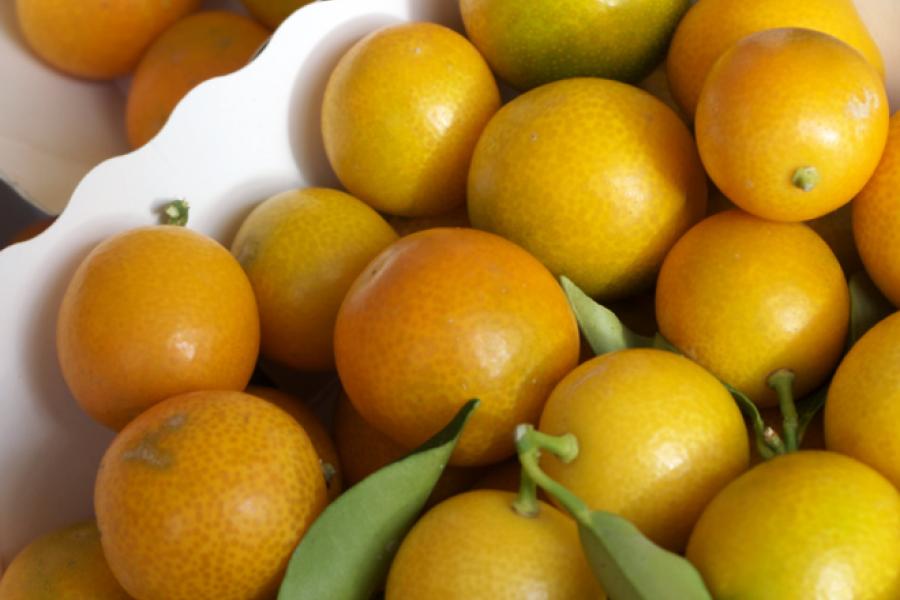Kumquat
The kumquat fruit resembles miniature, oval orange.
The kumquat trees and fruits, a relatively modern adquisition for the western countries, have been cultivated in China for centuries.
Kumquats are small orange, oval-shaped fruits, the name kumquat meaning “gold orange” and have been called the little gold gem of the citrus family. The kumquat tree is actually a shrub and similar in appearance to the orange tree. It is very decorative with its contrasting dark green leaves and prolifically bearing orange fruits.
Curious facts about kumquat
Kumquats, or cumquats, are believed to be native to China. It wasn’t until around 1915 that they were included in the genus Citrus by Dr. Walter T. Swingle, although they had been introduced to Europe in 1846 by Robert Fortune.
Out of four different types of kumquats, Nagami and Meiwa are the most common type grown in the United States. The other two varieties are called Hong Kong Wild and Marumi. The Nagami is the most common in the United States, it was brought to Florida from Japan in 1885, and has been grown commercially since 1895. It is also called the Oval Kumquat, due to its shape. It is up to one inch in diameter and between one to two inches in length.
The Meiwa is grown extensively in China. It is also known as the large round kumquat or the ninpo or neiha kinka. It was introduced to the U.S. in 1910, but still remains an elusive fruit to that country. Meiwa are round in shape and commonly referred to as the sweet kumquats, as they have few seed and are eaten whole. We do not recommend you use this type for cooking, only a snack.
How to use and store kumquat
Kumquats are the only citrus fruit that can be eaten skin and all, except for the seeds. The seeds should be removed, and as they contain pectin, boiled for use in making your jams and jellies. The skin of the kumquat is the sweet part, it can be eaten separately or enjoyed with the pulp, giving you a sweet and sour taste unique to only this fruit.
Kumquat are used in just about everything, from breads and pies, to ice-cream, savory dinners and beverages.
Cooking with kumquat
Kumquats can be used in sweet or savory dishes. Try Merlot candied kumquats, chocolate kumquat spring rolls, or kumquat-pecan crepes for the sweeter side of the kumquat.
Kumquat slices in a salad add an interesting sweet and sour touch. Kumquats whole or sliced are a refreshing to a hot tea or iced tea drink. Kumquat preserves, marmalades or jellies, have a unique taste.
How to grow kumquats
The tree and fruit are more resistant than other citrus plants. In warm weather, the fruit can last out several months on the tree. These plants do well when planted in a pot or a yard, surviving temperatures as low as 28° F (-2° C) degrees.
However, kumquats trees are rarely grown from seeds as they don tend to do well on their own roots. The preferred method to propagate kumquat trees is to graft them onto other citrus tree.
Kumquat - fortunella japonica, citrus madurensis: (citrus)
French kumquat
German goldorangei
Italian arancino cinese
Spanish kumquat, naranja dorada.

